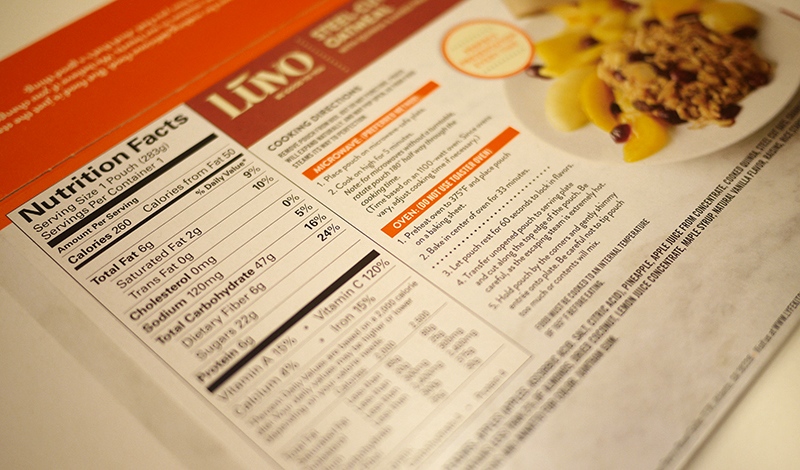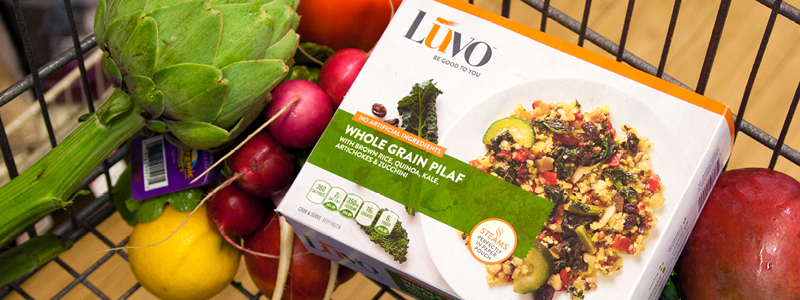The Fresh Blog
Lifestyle, Health, Nutrition & Inspiration from Luvo
What Does the Box Say?
A Guide to Reading Food Nutrition Labels
Sometimes, it feels as if the simple act of reading a food label is as complicated as getting an advanced chemistry degree. What’s the most important number to look at? Calories? Fat? And what about those tiny, confusing words in the ingredient list? And how about those health claims?
Here at Luvo, we believe that finding great-tasting, nutritious food should be as simple as spotting our logo on a package. Behind the scenes, we’re busy making sure our chefs are responsible with sugars, saturated fats, sodium, and calories, so you don’t have to be a label detective to figure out if the food is healthy.

But sometimes you have to pick up a package to decide whether to give something the green light. Here are some guiding principles:
Serving size
Many people scan a label looking for calories, sodium, or another number they’re trying to control but unless you stop at the serving size first, you may not know whether you’re staying within budget since all those figures are directly tied to portion sizes, which may be unrealistically small. I once spotted a single cookie, packaged all by itself, with a serving size of two listed on package. I’m all for sharing dessert, but really—one cookie?
Calories
I think the quality of your calories are more important than counting calories, but I do believe in being calorie aware. I’ll take 200 calories of almonds over 200 calories of potato chips any day of the week because almonds satisfy my munchies while doing a great job filling me up and flooding my body with beneficial nutrients, like fiber, protein, and vitamin E. Potato chips? Not so much.
Sodium
The Daily Value for sodium is 2,400 mg, which is an upper limit. Since around 70% of the sodium we eat is from packaged food, it’s a good idea to zoom in on this number. It’s also easy to make some healthy swaps just by taking note of sodium counts. On a recent trip, I found sliced whole wheat breads with anywhere from 80 mg of sodium to 260 mg per slice, so a simple swap can add up to huge sodium savings.
Trans fat
This number should always be zero. Period.
Sugars
This is where it gets a little tricky because at the moment, the food label doesn’t parse out whether sugars are coming naturally from sources like lactose in dairy products or fructose in dried fruits or when they’re added from ingredients like honey, brown rice syrup, agave, high fructose corn syrup, or another sweetener. Still, look at this number and compare it with other items in the category. For example, you can pick up a package of fruit-free cereal and see north of 10 g of sugar, or as little as 1 g. And considering that 4 g of sugar is equal to one teaspoon, the cereal with 10 g has more than 2 ½ teaspoons of added sugar. Just something to think about.
Ingredients
Like I said, it’s quality over calories so scan the tiny list of ingredients and look for whole grains and other good-for-you foods you might find in your kitchen, like herbs and spices, and real produce. When you see words you expect to find in a chemistry textbook, it’s probably not a good sign.
Happy shopping!


